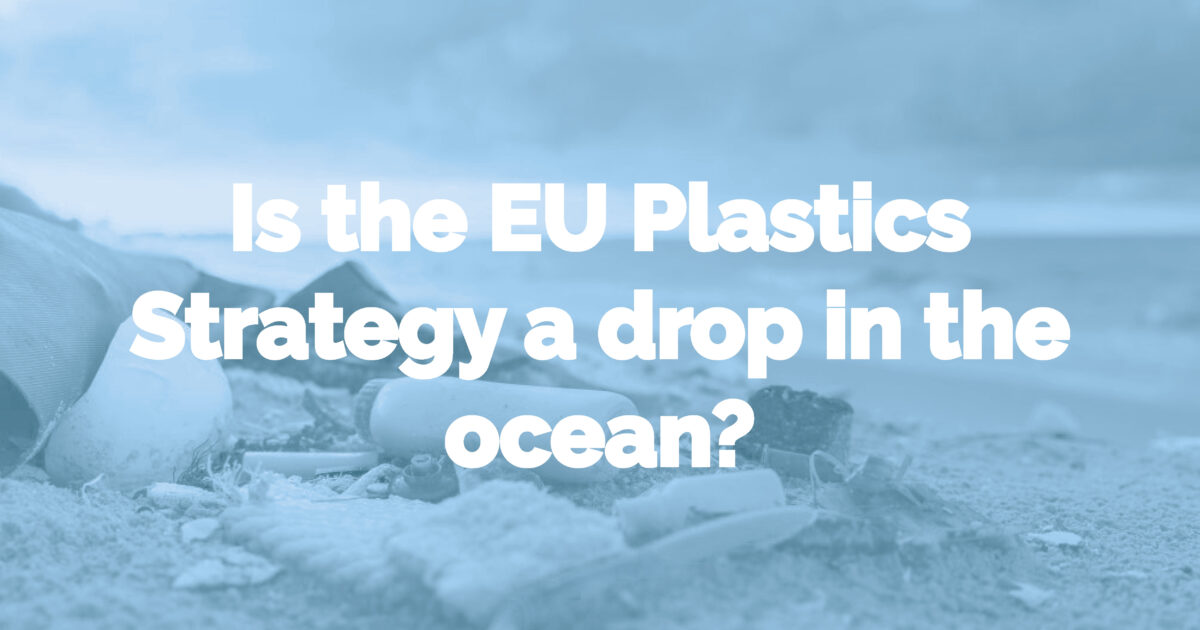Recent studies show that 90% of plastic polluting the oceans comes from just ten rivers located in Asia and Africa. With these shocking statistics, our team explore the EU Plastics Strategy to see if it’s the start of tackling the global plastics problem?
From consumers, suppliers, retailers, governments and even just as mere humans, we’re all responsible for tackling the global plastic problem. The statistics released by the Ellen MacArthur Foundation claim there will be more plastic than fish in the ocean by 2050, which is nothing short of terrifying. Along with visible pollution comes the hidden problems of microplastics, their impact on marine life and the wider food chain.

Of all the global plastics manufactured, over half are used solely for packaging, many only once and failing to be disposed of responsibly. So as an industry, we are rightly facing pressure to examine exactly where we’re going wrong.
The EU commission outlined their Plastics Strategy for a Circular Economy earlier this year. The strategy makes commitments to ensure recycling is more profitable for business, to curb plastic waste and stop littering at sea. Furthermore, it aims to drive investment and innovation and spur change across the world. How? By preparing the Packaging and Packaging Waste Directive to set requirements and recommendations for member states.
Throughout the report, there are proposals, suggestions, recommendations and referrals to a ‘vision’. However, new rules on waste management have not yet been agreed upon and implemented.
Managing the huge volumes of waste from our ‘throw-away culture’ is nigh on impossible. We are simply manufacturing more plastic than we are able to dispose of. Even with the robust recycling systems in place here in the UK, it’s still not enough. According to Recoup UK only 21% of plastic films and 76% of plastic pots, tubs and trays are currently recycled by local authorities.

What can we do?
Compare these figures to the most polluting countries with no infrastructure, government funding or obligation to control plastic waste; it’s a real problem. In their Plastic Planet feature, National Geographic quoted Ramani Narayan from Michigan State University who suggests that even if Europe and North America managed to recycle all of their waste it would hardly make a dent in the total plastics found in the oceans.
A scary statement, but one that many people must hear before we commit millions to new collection systems/waste management centres. As well as investing in new biodegradable materials that in fact may do far more harm than existing plastic packaging materials on the market.
The recent media frenzy has sent many consumers, brands and retailers into a spiral of confusion. But the fact of the matter is we can’t simply villainise all plastics in packaging. It’s a naïve and dangerous belief that abolishing all plastic can be an immediate solution to such a complicated issue.
What we can do is ensure that we always design with the end in mind. We can work to optimise packaging and use more lightweight materials with reduced environmental impact. It’s also important to think about recycling and reusing at end of life. We can look at whether we really need to use plastic for single use, throw away formats. Rather than contaminating current waste streams, we can develop materials that will be accepted.
We can put collective pressure as an industry on the government to invest in improved infrastructure here in the EU. Furthermore, we can also further afield in developing countries that need it most. As the statistics suggest, until the worst offending countries address their waste systems, Western policies are futile.
Sustainable Solutions
This month we launched our Sustainability series, outlining our commitment to sustainability as well as providing a free eBook for all our followers on the “Ultimate Guide to Sustainable Packaging”. If you’re looking for more information on the feasible solutions for your packaging today, then we suggest you grab a coffee and settle in with our eBook.


